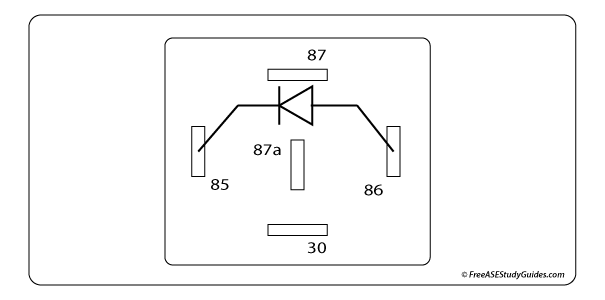ASE A2 Automatic Transmission Practice Test
26. An automatic transmission is hard shifting only in second gear. All other gears are operating correctly. Technician A says this could be caused by a faulty accumulator. Technician B says the accumulator may have a broken spring. Who is correct?
- A. Technician A
- B. Technician B
- C. Both A and B
- D. Neither A or B
27. Technician A says that a shift solenoid is a hydraulically controlled device used for shift control. Technician B says shift solenoids are computer-controlled actuators that can be diagnosed with a scan tool. Who is correct?
- A. Technician A
- B. Technician B
- C. Both A and B
- D. Neither A or B

28. The electrical item in the illustration above represents:
- A. A single pole solid state relay.
- B. A single pole dual throw electromechanical relay.
- C. A pulse width modulated solenoid.
- D. A single throw solid state relay.

29. Component A in the schematic diagram above is:
- A. A connection in the signal circuit for TP sensor.
- B. A splice in the signal circuit for TP sensor.
- C. A splice in the ground circuit for TP sensor.
- D. A connection in the reference circuit for TP sensor.
30. Technician A says a faulty throttle position sensor affects engine and automatic transmission performance. Technician B says that the throttle position sensor indicates vehicle speed to the transmission control unit. Who is correct?
- A. Technician A
- B. Technician B
- C. Both A and B
- D. Neither A or B